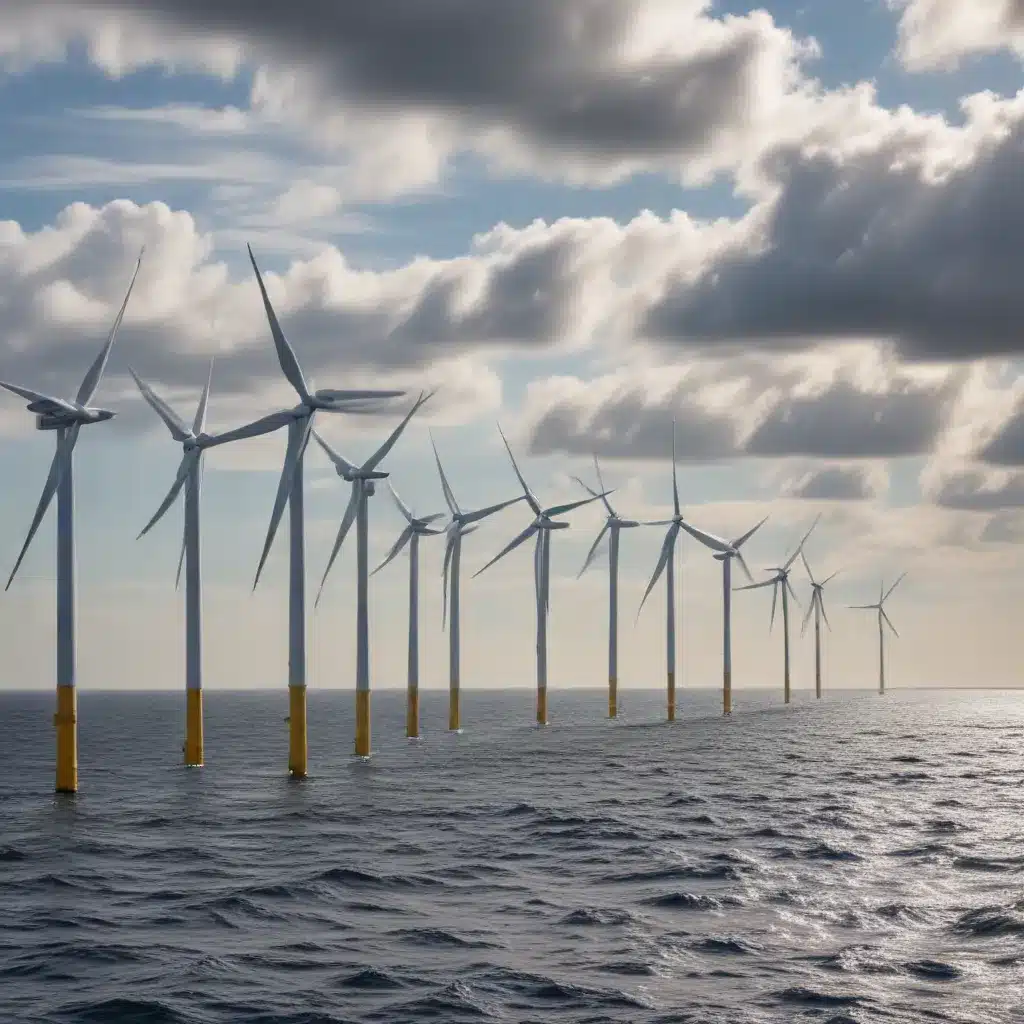
Europe’s transition to clean energy is gaining momentum, with offshore wind development emerging as a key driver of this shift. As the continent strives to meet its ambitious net-zero goals, the deployment of large-scale offshore wind projects has become a central focus. However, this endeavor is not without its challenges, necessitating a comprehensive approach to address technological, environmental, and economic considerations.
Technological Advancements
The offshore wind industry has witnessed remarkable technological progress in recent years. Turbine designs have become increasingly sophisticated, with larger and more efficient models capable of harnessing greater wind resources. The development of floating offshore wind technology has also opened up new frontiers, allowing for the exploitation of deeper waters where traditional fixed-bottom turbines are not feasible. These advancements have significantly improved the capacity factor of offshore wind farms, enhancing their overall energy yield and driving down the levelized cost of energy (LCOE).
Environmental Considerations
Offshore wind projects operate in delicate marine ecosystems, requiring meticulous environmental impact assessments and mitigation strategies. Careful consideration must be given to the potential effects on marine wildlife, including seabirds, marine mammals, and fish populations. Developers are partnering with environmental organizations to implement innovative solutions, such as bat and bird deterrent systems and measures to minimize seafloor disturbance during construction. The integration of offshore wind with other maritime activities, such as shipping and fishing, also demands a collaborative approach to ensure the sustainable co-existence of these industries.
Economic Feasibility
The economic viability of offshore wind projects has been a critical concern, with historically higher capital expenditures compared to onshore wind or solar. However, the rapid technological advancements and economies of scale have driven down the LCOE, making offshore wind increasingly competitive. The availability of long-term Power Purchase Agreements (PPAs) and innovative financing mechanisms, such as green bonds, have further improved the economic attractiveness of these projects. Governments have also played a pivotal role in creating favorable policy environments, with measures such as feed-in tariffs and auction-based support schemes.
Regulatory Frameworks
To facilitate the rapid deployment of offshore wind, Europe has developed robust regulatory frameworks that address various aspects of project development. These include streamlined permitting processes, clear guidelines for environmental assessments, and mechanisms for international cooperation. The European Union’s Renewable Energy Directive and the National Energy and Climate Plans of individual member states have provided a coherent policy landscape, encouraging investments and fostering technological innovation.
Supply Chain Development
Realizing the full potential of offshore wind requires a strong and resilient supply chain. Significant investments are being made to build up domestic manufacturing capabilities for key components, such as turbine blades, nacelles, and foundations. Ports and logistics infrastructure are also being upgraded to support the efficient transportation and installation of these large-scale components. Collaborations between industry, academia, and government agencies are driving the development of specialized vessels, installation techniques, and logistics optimization.
Environmental Impact Assessment
Comprehensive environmental impact assessments are a crucial component of offshore wind development. These assessments analyze the potential effects on marine ecosystems, including seabed disturbance, noise pollution, and wildlife displacement. Mitigation strategies, such as habitat restoration, underwater noise reduction, and monitoring programs, are implemented to minimize the project’s ecological footprint. Stakeholder engagement, including with local communities and environmental organizations, helps to address concerns and ensure the long-term sustainability of these projects.
Community Engagement
Engaging local communities is essential for the successful deployment of offshore wind projects. Developers are proactively addressing public perception and concerns through transparent communication, educational initiatives, and community benefit schemes. These efforts aim to foster a sense of ownership and ensure that the economic and social benefits of offshore wind are equitably distributed. Involving local stakeholders in the planning and decision-making processes helps to build trust and garner support for these transformative projects.
Grid Integration and Transmission
The integration of large-scale offshore wind farms into the existing electricity grid poses unique challenges. Modernizing and upgrading grid infrastructure, including transmission lines, substations, and grid balancing mechanisms, is crucial to accommodate the influx of renewable energy. Advancements in energy storage technologies, such as battery storage and power-to-X solutions, are also essential for ensuring the reliable and efficient integration of offshore wind into the broader energy system.
Financing and Investment
Securing the necessary financing for offshore wind projects remains a significant hurdle. However, the growing availability of green financing instruments, such as green bonds and sustainability-linked loans, has increased the accessibility of capital. Innovative risk-sharing mechanisms, including public-private partnerships and government guarantee schemes, have also helped to attract investments and mitigate the perceived risks associated with these large-scale projects.
Workforce and Skills Development
The rapid expansion of offshore wind requires a skilled and specialized workforce. Significant investments are being made in training programs, educational institutions, and research and development initiatives to build a robust talent pipeline. Collaboration between industry, academia, and policymakers is crucial in developing tailored curricula, fostering knowledge transfer, and creating job opportunities for local communities.
Europe’s offshore wind sector is poised for remarkable growth, driven by technological advancements, supportive regulatory frameworks, and a steadfast commitment to sustainability. By overcoming the barriers associated with environmental considerations, economic feasibility, and supply chain development, the continent is positioning itself as a global leader in this transformative renewable energy paradigm. Through continued innovation, strategic partnerships, and community engagement, the offshore wind industry can make a substantial contribution to Europe’s net-zero ambitions, paving the way for a more sustainable and resilient energy future.
To learn more about the latest developments in Europe’s renewable energy landscape, visit the European Future Energy Forum.







